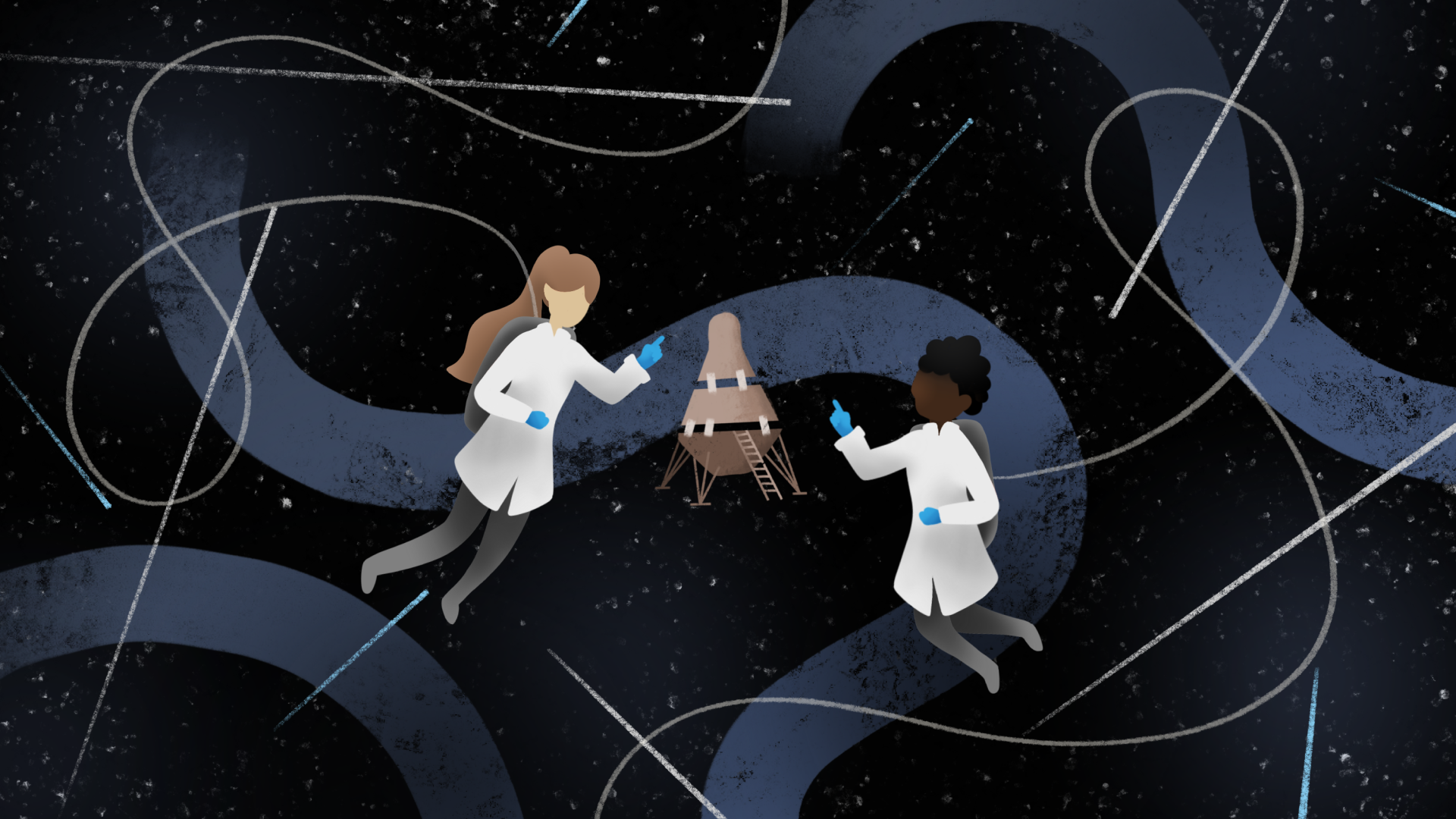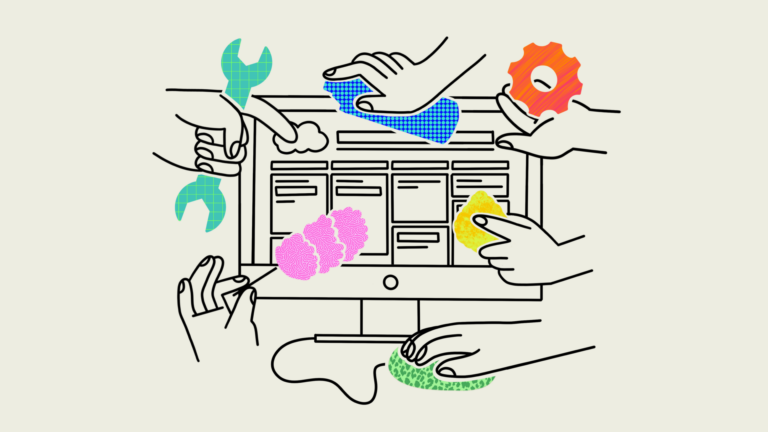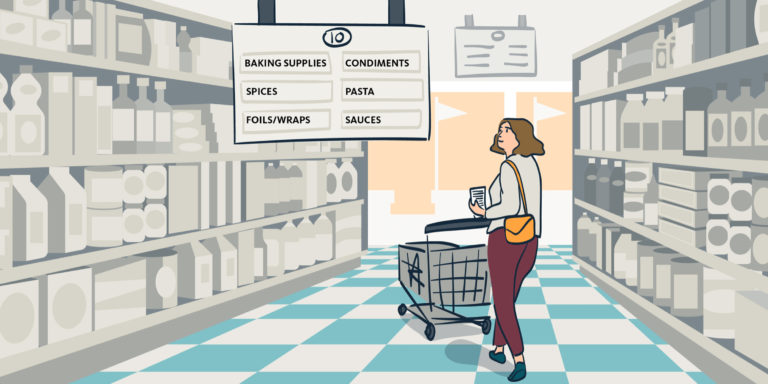
NASA loves to build models. How do we know? The Smithsonian Air and Space Museum is full of them. Sometimes, these models are built to be tested in a wind tunnel. Sometimes, it’s to convince an astronaut to get rid of an unnecessary chair. NASA obviously sees the value in a prototype, which helps anyone refine an idea and solve a business problem before building the actual thing.
Here at Think Company, we build digital, clickable prototypes—things that seem like software—before we build the software. Then we talk about it.
A prototype is a time machine that only travels forward. You can use a prototype “time machine” to climb into an idea and see the future of your product or service offering. Do you like that future? What would you change about that future? What should you do now to get to that future—or change it?
We work with clients to build prototypes to ensure that your team doesn’t spend precious time making the wrong thing. Your product must meet the real-life needs of your users. But in a B2B environment, it’s just as critical that a tool makes business sense for the organization offering it.
Gauging the market fit of a business product can be challenging, often because your product’s potential buyers are rarely the product’s end users. For enterprise business products, the buyers of these systems are usually senior-level executives who will never interact with the system and don’t know the pain points for the users the product will serve. Since the buyers aren’t the users, they don’t have a good way to decide what the best product is for those users. It’s critical to start by understanding what business challenges your buyers are trying to overcome—and tailor your product to meet those needs.
Collecting feedback and buy-in with executive stakeholders
Prototypes make it easy for a broad range of people with diverse backgrounds to understand and contribute to a product’s design. This includes executive stakeholders. By taking an idea, image, or concept from a flat, two-dimensional idea to an interactive product mockup, stakeholders can get a real sense of what’s possible, refine their ideas, get excited about its possibilities, and demonstrate to the industry where they are going.
Prepare partners and business units
Building a product requires coordinating between the teams building, supporting, promoting, and selling it. These groups work more successfully when they are exposed to each other’s processes—designers benefit from knowing what salespeople hear from prospects, marketing is more potent when it’s informed by feedback from customer service, and engineering gets a better sense of the underlying systems to support the product, etc.
To see an example of how this works in a high-pressure environment, you need to go no further than the Smithsonian’s Air and Space Museums. In their collections are countless aircraft models meticulously built to scale so various groups can visualize and test how the full-size craft will work. For more than half a century, astronauts have practiced their procedures on full-size models of cockpits under the watchful eye of human-computer-interface engineers refining their tools to ensure the safest and most effective experience for everyone. These prototypes have been as sophisticated as fully-functional models and as simple as cardboard mockups.
Nothing makes this cross-functional information share easier than a prototype. When people with a range of skills, backgrounds, and responsibilities can interact with a mockup of the product, they can see exactly where their efforts will contribute—and be informed by other teams’ needs.
Without something tangible to react to, everyone brings their own knee-jerk preconceptions and works to get them included in the product. With something tangible, something collaborative, to respond to, teams talk past each other less; they are talking about the same thing, and their ideas can benefit from each other instead of competing.
Talk with our experts about turning your product ideas into reality
Want to ensure you’re building the right thing? We can help you ensure your product meets your customers’ real needs with product prototyping.
Articulate product direction and collect market intelligence
If your organization builds products, you’re probably used to analyzing what your competitors are doing. That information usually gets included in conversations about where your product is headed. Building prototypes can free you to be more original and make decisions based on your company’s unique offering, rather than a perpetual game of GMOOT: “Get Me One of Those!” Do your users want precisely what your competitors have, or do you have an opportunity to leapfrog them? By making your vision real, you have a chance to build on their success, not just imitate it.
And when a competitor inspires you, you can test how well that idea works for your customers and product, and iterate in a way that makes sense for your business—rather than someone else’s. This can be crucial in developing a leading edge in a crowded market.
You still need end-user feedback
None of this is to say that end-user feedback has no value while gauging market fit. Years ago, while researching the market fit for an HR analytics platform, our team uncovered a flaw in many payroll systems that reduces the efficiency of many payroll administrators. This discovery was the direct result of end-user feedback and created an opportunity to prototype several solutions to solve this problem. When we found a solution that closed the gap, we not only improved the product for users, but this adjustment gave our client an edge in sales meetings. (“You know how annoying it is when you use X product and your team still has to do Y? This tool solves that problem.”)
Prototyping helps to ensure your product is meeting the real needs of its users—and has a unique space in the market. Climb into your idea and experience the future. And then build your way there.


